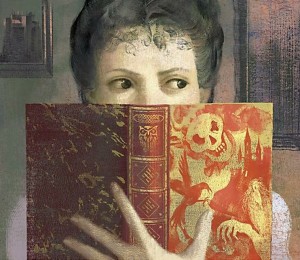Austen’s Satirical Writing Style
Satire is a technique employed by writers to expose and criticize foolishness and corruption of an individual or a society by using humor, irony, exaggeration or ridicule. It intends to improve humanity by criticizing its follies and foibles. A writer in a satire uses fictional characters, which stand for real people, to expose and condemn their corruption.
Jane Austen’s roots were in literary parody. From her juvenilia, to her first full-length satire of the sentimental and Gothic novel, Northanger Abbey, to her final uncompleted novel, ‘Sanditon’, she continued to use satire as a literary tool. She was a comic writer first and foremost. But, she also was aware that satire acts as a form of criticism, a way of explaining the absurdities and limitations of a particular situation.
In Sense and Sensibility, the satire is more refined, but more stinging and acute, compared to her other novels. Austen satirizes the bullying egotism that is implied in Marianne Dashwood’s excessive sensibility: “She expected from other people the same opinions and feelings as her own, and she judged of their motives by the immediate effect of their actions on herself”. Marianne’s romantic notions are frequently punctured by Austen. So, for example, one of her impassioned outbursts about autumnal leaves elicits the dry response: “It is not everyone who has your passion for dead leaves”.
Jane Austen was a supreme social satirist. Wit was valued highly in her family. The focus of her satire in Pride and Prejudice is social class and social standing. The later novels, Emma, Persuasion, and ‘Sanditon’, all register social and economic change and enact social mobility. But in Pride and Prejudice, Austen presents her most upwardly mobile heroine in Elizabeth Bennet and mocks the anachronistic social pride of Mr Darcy.
In Northanger Abbey there is an omniscient narrator mainly portraying the character of Catherine therefore it is somewhat limited. It is a parody of gothic fiction so it uses a lot of irony to be humorous.
An example of this is when they are traveling from Bath to Northanger Abbey and Henry tells a hypothetical story about Catherine’s first night at Northanger Abbey and uses a very exaggerated style of gothic elements to ridicule the ‘creepy house’ stereotype. It could possibly be a parody of some of Ann Radcliffe’s writing, which was popular gothic literature in the Jane Austen era.
Humor is not only used in the gothic elements but also at other aspects of the novel such as the romance with witty back and forth dialogue.



